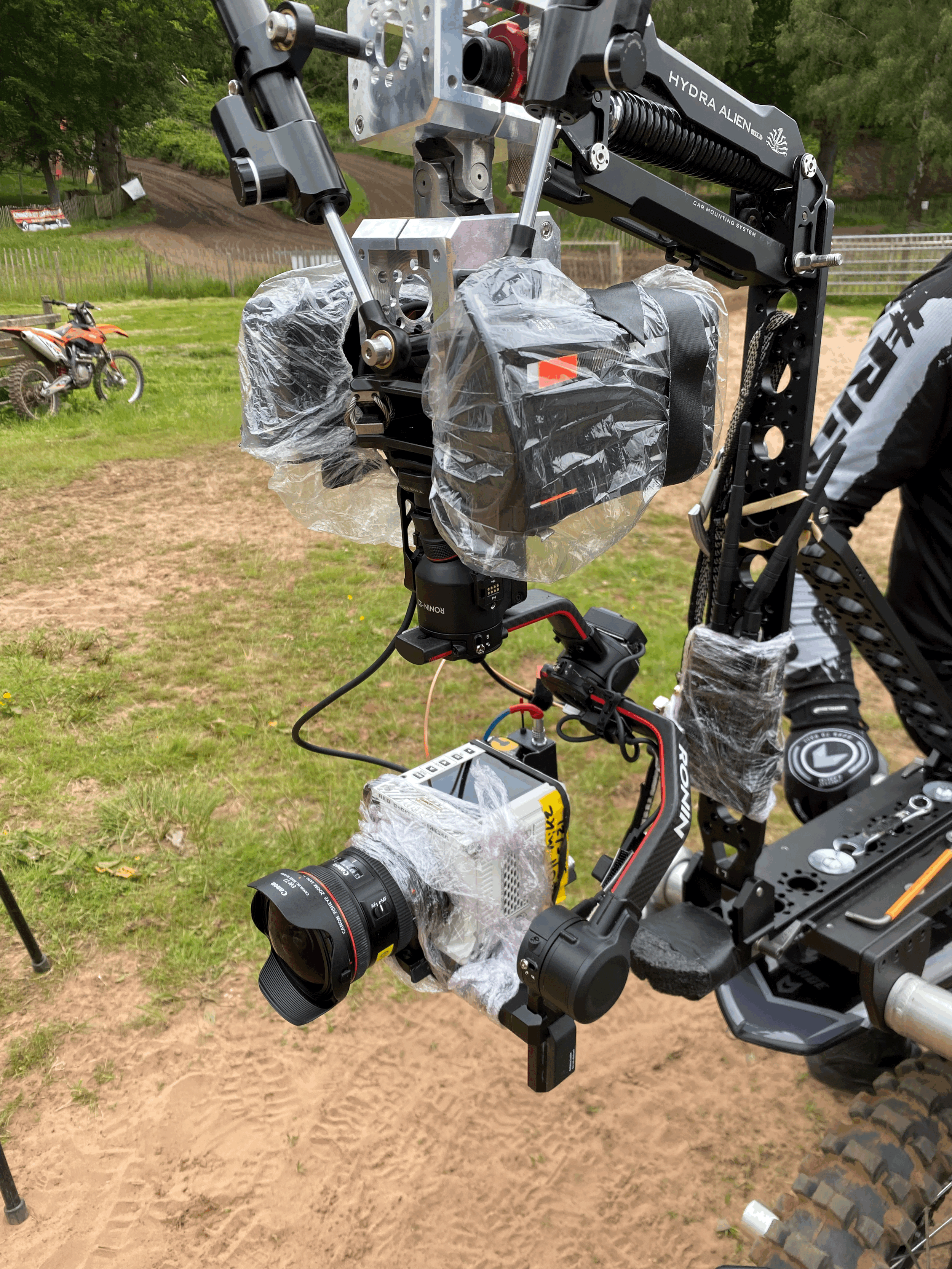As I get back to a full working life again, and wave goodbye to months of freedom to go cycling whenever I liked, I have started to get my head back into the possibilties that new, cheaper equipment can provide for a TV show.
The DJI RS2 gimbal came out and I immediately bought one. During 2020 I purchased a Red Komodo 6K camera as my personal shooter, and the mini RS2 gimbal suits it perfectly. It always interests me how one device can become a gateway for others, and then lead to new shooting ideas.
Once a camera is smaller, the bits that hold it become smaller. Now you can put them in intersting places you couldn’t before. Maybe you can send out a 2nd Unit to shoot stabilised driving plates with the RS2, Komodo and a Tilta Hydra shock arm instead of the main unit Movi Pro & more expensive Flowcine Black arm?
Well you could, if the Hydra, a brilliantly priced bundle of car rigging parts, had a fully working arm. Tilta did a great job with the Hydra, don’t get me wrong, but it has a fatal flaw. A larger shock arm such as the Flowcine Black Arm has a “sway” module at the end of the spring section that allows the camera payload to shift side ot side and forward and back with a damper on each axis (or 2)., The Hydra, missing this, introduces Vibration into the shots as the rigid arm can only absorb shock vertically and then everything else is trying to be fixed by the coil isolator next to the camera.
I had a sequence to shoot on the last show trying to get smooth plates with a good camera at speed on a motocross race track. Super difficult to do! The Hydra, RS2 and Komodo fit the bill for weight and size, but that vibration would not work. So I designed a part to try and remove it.
I designed a piece of alloy to simpy connect an off the shelf two axis bearing from a vehicle between the camera payload and spring arm of the hydra. One piece repeated 4 times to bind together as pairs compressing the bearing joint (with a safety stop also) and then interfacing with Tilta’s 25mm hole spacing connector.
I managed to get through our grip on the show a local firm to machine these parts. They weren’t too cheap but speed was important. I received the parts and bought 2 cheap dampers from Amazon.
It turns out, that my slightly risky plan of a combined 2 axis system, as opposed to two separate bearings with separated dampers, paid off. The 2 dampers actually worked together to damp each direction, largely because they mount with a spherical bearing housing, meaning they can tip and lean as the pins slide in and out. It actually really worked!
We filmed using this at a full motorcross track and despite a failiure on the firsdt day that bent the damper on the spring arm (I had to pull one out of another bit of kit to repair it) we got the shots we needed.
But then on the other hand, I also shot GoPro cameras at the same time. Despite the lower quality file and dynamic range, the clean shots are actually WAY smoother on the GoPros. We’re only a couple of years away from these action cameras being a great match for our main cameras in quick cuts and action sequences. So much easier to use too.
… All this playing with dampers and spring arms had me thinking too. Is it time I buy my own Black Arm? I had a look around and Gremsy, from Vietnam, who made the H16 Gimbal I used for season 1 of Tin Star have made their own version of the Black Arm. It’s way cheaper and modular so I can also use the sway module on a crane. So I bought one of those for my next show.
So now I have my own shock arm that can take the Movi Pro or the RS2 gimbal. Now what can I do?
I have a shot on the next show tracking behind a piece of luggage, focusing on the wheels then tilting up to see the person pulling it. Now I can get the Movi really low without doing a weird crouch walk. I can add a scaff tube adaptor to the Mitchell Plate on the dolly and then use the shock arm and Movi Pro skimming the ground. It won’t matter if the dolly has a rougher surface to ride over as the spring arm and isolators will remove all of that. I also won’t be operating risking my back and will be able to concentrate better on framing and operating the tilt.
Now I’m thinking of all the other times I could use this tool, now it’s in my kit!







